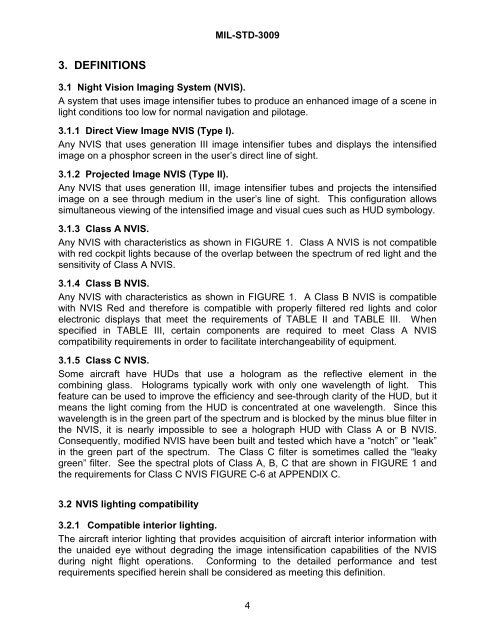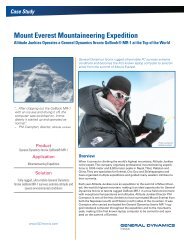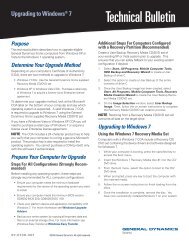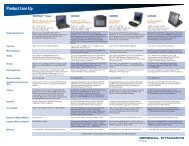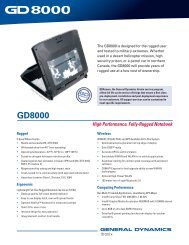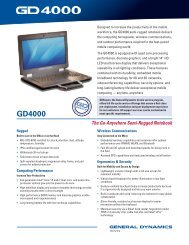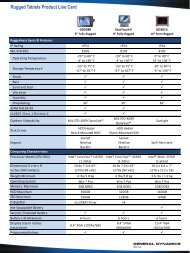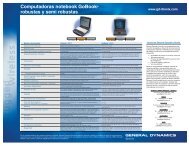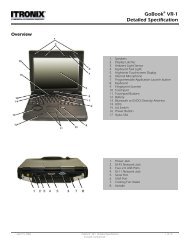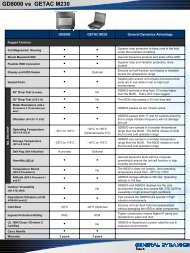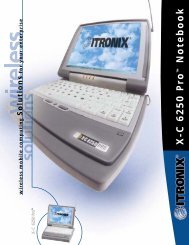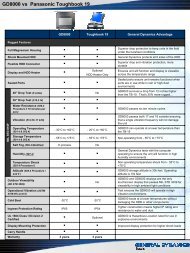lighting, aircraft, night vision imaging system - General Dynamics ...
lighting, aircraft, night vision imaging system - General Dynamics ...
lighting, aircraft, night vision imaging system - General Dynamics ...
You also want an ePaper? Increase the reach of your titles
YUMPU automatically turns print PDFs into web optimized ePapers that Google loves.
3. DEFINITIONS<br />
MIL-STD-3009<br />
3.1 Night Vision Imaging System (NVIS).<br />
A <strong>system</strong> that uses image intensifier tubes to produce an enhanced image of a scene in<br />
light conditions too low for normal navigation and pilotage.<br />
3.1.1 Direct View Image NVIS (Type I).<br />
Any NVIS that uses generation III image intensifier tubes and displays the intensified<br />
image on a phosphor screen in the user’s direct line of sight.<br />
3.1.2 Projected Image NVIS (Type II).<br />
Any NVIS that uses generation III, image intensifier tubes and projects the intensified<br />
image on a see through medium in the user’s line of sight. This configuration allows<br />
simultaneous viewing of the intensified image and visual cues such as HUD symbology.<br />
3.1.3 Class A NVIS.<br />
Any NVIS with characteristics as shown in FIGURE 1. Class A NVIS is not compatible<br />
with red cockpit lights because of the overlap between the spectrum of red light and the<br />
sensitivity of Class A NVIS.<br />
3.1.4 Class B NVIS.<br />
Any NVIS with characteristics as shown in FIGURE 1. A Class B NVIS is compatible<br />
with NVIS Red and therefore is compatible with properly filtered red lights and color<br />
electronic displays that meet the requirements of TABLE II and TABLE III. When<br />
specified in TABLE III, certain components are required to meet Class A NVIS<br />
compatibility requirements in order to facilitate interchangeability of equipment.<br />
3.1.5 Class C NVIS.<br />
Some <strong>aircraft</strong> have HUDs that use a hologram as the reflective element in the<br />
combining glass. Holograms typically work with only one wavelength of light. This<br />
feature can be used to improve the efficiency and see-through clarity of the HUD, but it<br />
means the light coming from the HUD is concentrated at one wavelength. Since this<br />
wavelength is in the green part of the spectrum and is blocked by the minus blue filter in<br />
the NVIS, it is nearly impossible to see a holograph HUD with Class A or B NVIS.<br />
Consequently, modified NVIS have been built and tested which have a “notch” or “leak”<br />
in the green part of the spectrum. The Class C filter is sometimes called the “leaky<br />
green” filter. See the spectral plots of Class A, B, C that are shown in FIGURE 1 and<br />
the requirements for Class C NVIS FIGURE C-6 at APPENDIX C.<br />
3.2 NVIS <strong>lighting</strong> compatibility<br />
3.2.1 Compatible interior <strong>lighting</strong>.<br />
The <strong>aircraft</strong> interior <strong>lighting</strong> that provides acquisition of <strong>aircraft</strong> interior information with<br />
the unaided eye without degrading the image intensification capabilities of the NVIS<br />
during <strong>night</strong> flight operations. Conforming to the detailed performance and test<br />
requirements specified herein shall be considered as meeting this definition.<br />
4


